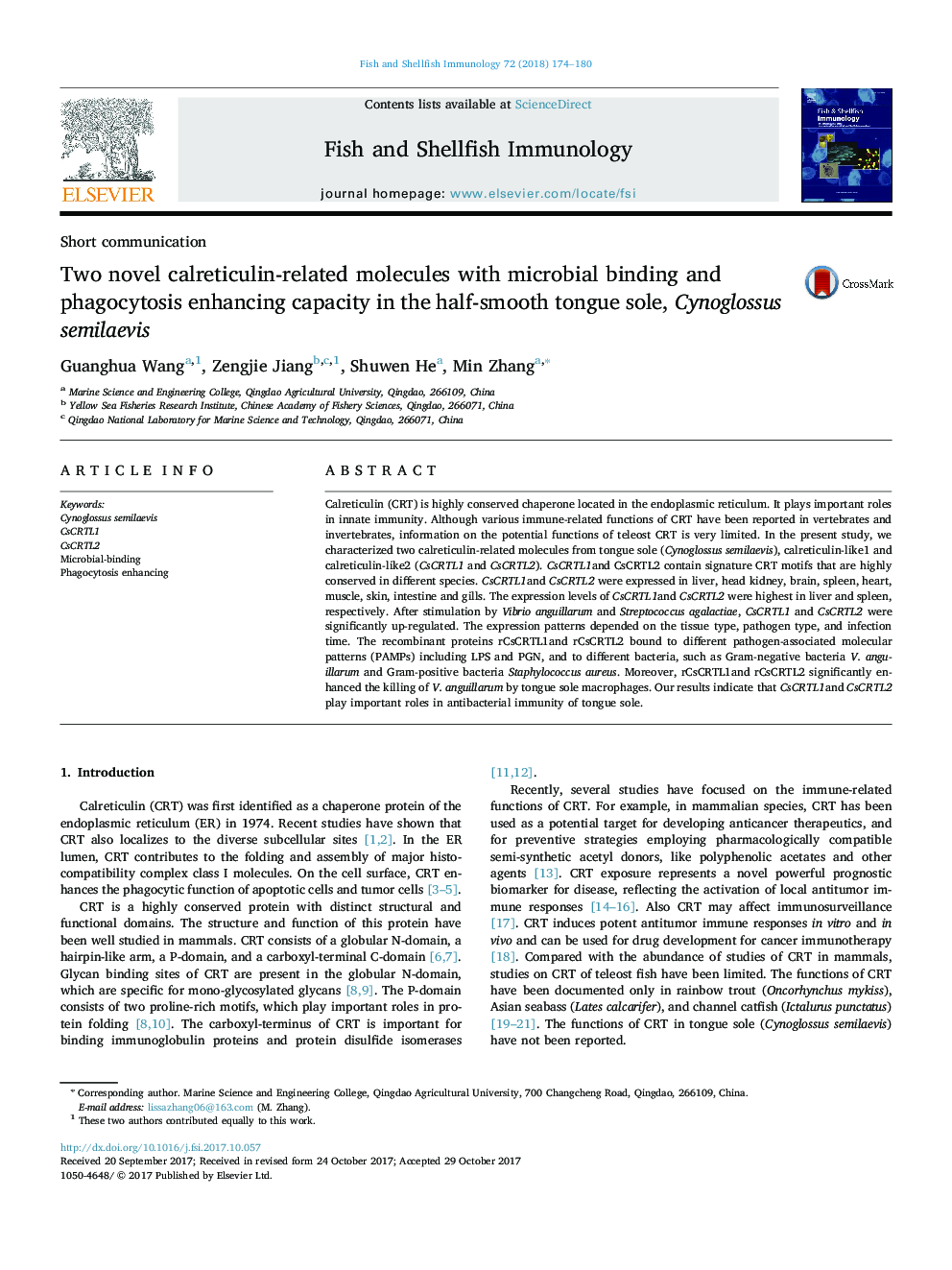| Article ID | Journal | Published Year | Pages | File Type |
|---|---|---|---|---|
| 8498957 | Fish & Shellfish Immunology | 2018 | 7 Pages |
Abstract
Calreticulin (CRT) is highly conserved chaperone located in the endoplasmic reticulum. It plays important roles in innate immunity. Although various immune-related functions of CRT have been reported in vertebrates and invertebrates, information on the potential functions of teleost CRT is very limited. In the present study, we characterized two calreticulin-related molecules from tongue sole (Cynoglossus semilaevis), calreticulin-like1 and calreticulin-like2 (CsCRTL1 and CsCRTL2). CsCRTL1and CsCRTL2 contain signature CRT motifs that are highly conserved in different species. CsCRTL1and CsCRTL2 were expressed in liver, head kidney, brain, spleen, heart, muscle, skin, intestine and gills. The expression levels of CsCRTL1and CsCRTL2 were highest in liver and spleen, respectively. After stimulation by Vibrio anguillarum and Streptococcus agalactiae, CsCRTL1 and CsCRTL2 were significantly up-regulated. The expression patterns depended on the tissue type, pathogen type, and infection time. The recombinant proteins rCsCRTL1and rCsCRTL2 bound to different pathogen-associated molecular patterns (PAMPs) including LPS and PGN, and to different bacteria, such as Gram-negative bacteria V. anguillarum and Gram-positive bacteria Staphylococcus aureus. Moreover, rCsCRTL1and rCsCRTL2 significantly enhanced the killing of V. anguillarum by tongue sole macrophages. Our results indicate that CsCRTL1and CsCRTL2 play important roles in antibacterial immunity of tongue sole.
Keywords
Related Topics
Life Sciences
Agricultural and Biological Sciences
Aquatic Science
Authors
Guanghua Wang, Zengjie Jiang, Shuwen He, Min Zhang,
